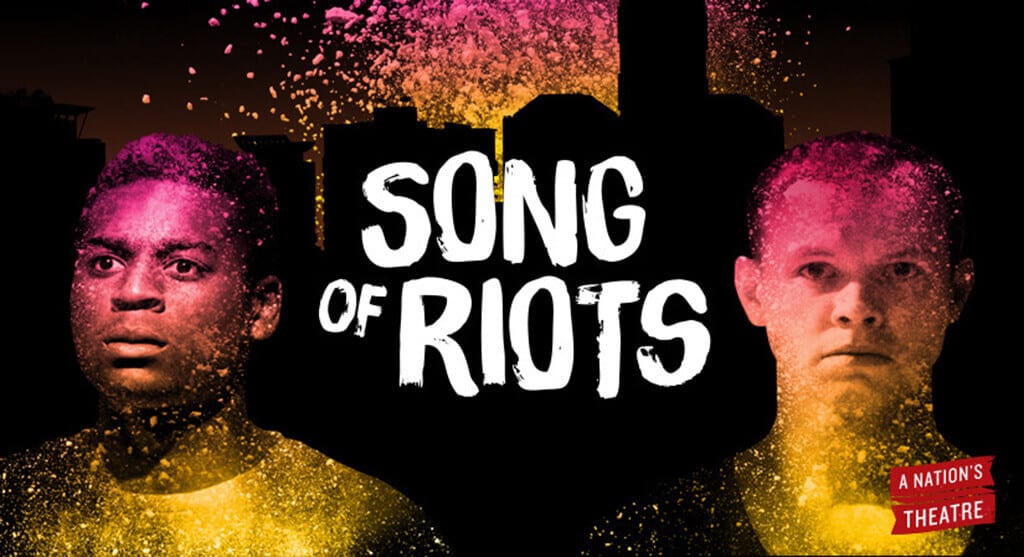Song of Riots is truly ‘the story of kingdoms lost and won’: written by Lucy Maycock, it follows Lucasz, the only son of a Polish single mother, and a fairy tale prince (from Iron Hans). Despite their vastly different backgrounds, both boys struggle with familial and social expectations; both are tempted by an alternative lifestyle; both fall.
The two storylines are initially separate, although closely related; they then converge, as the two boys meet and become friends, before dividing again. The actual plot of the play is quite difficult to follow, as the distinction between fantasy and reality becomes increasingly unclear, but in spite of these blurred lines, the play still manages to make itself felt.
The text of the play is a mishmash of dialogue, poetry and music – which ranges from subdued strings to energetic rap and beatboxing. The lyrics are also a mixture, combining narration of the plot with poetry by William Blake. This mixture of musical styles and forms works incredibly well, drawing out the similarities between poetry and rap, and it is this cross-cultural, cross-temporal awareness that brings the play to life.
Beatboxing and dancing are just some of the ways Lucasz and the Prince express their abundant energy – less mild routes include theft and drug-taking, as the boys’ behaviour descends into rioting and destruction. The action of the play was inspired in part by the London riots of 2011, and this influence is visible in the latter half of the play: frustrated and lost, the boys turn their previously creative energy towards destruction, and we are offered insight into the different reasons which might prompt people to turn towards crime and violence.
The minimal set hints at the urban location of the latter half of the play, and lights and projections are used sparingly but effectively to further set the scene. The sparseness of the set also means that it can be used for both storylines at once without it being necessary to change scenery between scenes, allowing the play to move along without any slowed pace.
The acting is consistently good throughout, although co-director Sivertsen deserves a special mention for his incredible physicality, as well as being the only actor to play multiple characters. Both Callender and Finnegan offer nuanced performances, exploring the problems of contemporary masculinity, and the transition from innocence to experience.

